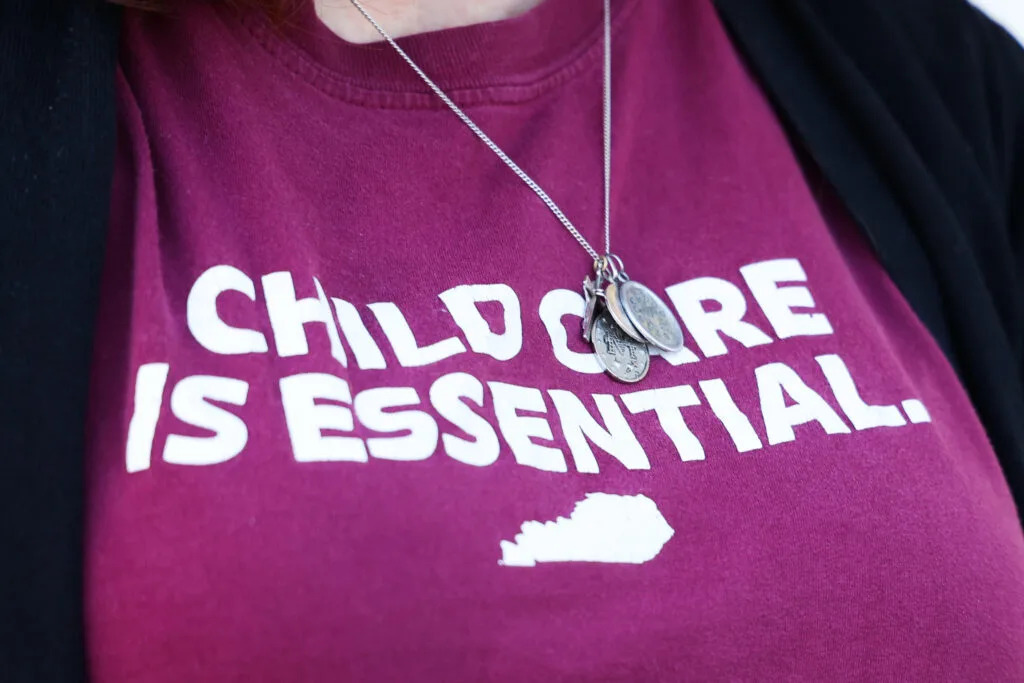
Jennifer Washburn, director and owner of iKids Childhood Enrichment Center in Benton, sports a shirt touting child care's importance, Nov. 28, 2023. (Kentucky Lantern photo by Abbey Cutrer)
If child care were more available and affordable in the state, around 16,000-28,000 people could join or rejoin the workforce and that could add around $600 million, conservatively, to the economy, the Kentucky Chamber of Commerce estimates.
The estimate comes from a report released Thursday, which analyzed the economic impact of more affordable child care in Kentucky.
“Even under conservative assumptions, the report’s upper-bound economic impact estimates range from $599.9 million to $1.097 billion annually in new wages, sales tax revenues and income tax revenues for Kentucky,” the report says.
This report does not include potential savings in the form of people no longer needing Medicaid or the Supplemental Nutrition Assistance Program, better known as SNAP. Charles Aull, the vice president of policy for the Kentucky Chamber of Commerce, said those points were too full of variables to confidently estimate the impact.
The goal with the report was to show a conservative estimate based on rigorous data of what a more robust child care landscape would mean for Kentucky, Aull said.

“It’s been, I think, fairly intuitive for most people at this point, that there’s a connection between the ability of parents to participate in the workforce and child care,” he said. “What hadn’t really happened so far was an effort to try to fully quantify that in a really rigorous way. And so that’s essentially what we wanted to provide with this report, was to take a really rigorous methodology, be very conservative in our approaches, be very cautious in our approaches, and try to estimate: ‘okay, if we can make child care more accessible and make it reasonably more affordable, what are the actual labor market outcomes?’”
The numbers the chamber came up with are based on survey data and academic research and point back to recommendations made by the chamber in May for how Kentucky can improve its child care landscape.
In 2024, a survey of 1,357 parents from 88 Kentucky counties showed that some parents had already chosen to exit the workforce because of inaccessible child care. Many families put off having more children, delayed big purchases and sacrificed health care needs because of child care complications, the Lantern previously reported.
Meanwhile, Kentucky’s workforce participation is among the lowest in the nation. Of its neighboring states, Kentucky is higher only than West Virginia, and tied with Tennessee at nearly 81%, among adults 25-54.
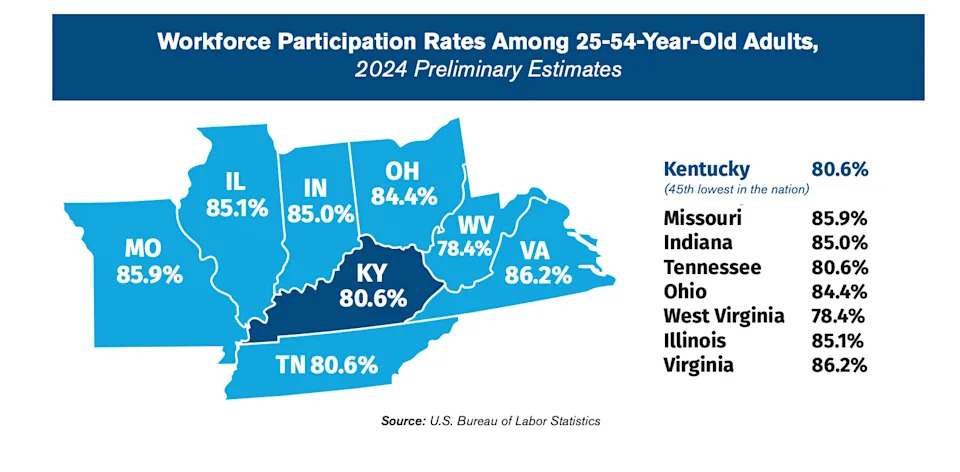
Gender and geography
If child care costs were reduced by $200 per month, around 6,000 married mothers could enter the workforce, based on survey data in the report. Academic research is a bit more conservative, estimating the number of married mothers who could enter or re-enter the workforce is around 4,000.
At that same cost reduction per month, the report shows:
Nearly 1,700 single mothers currently not in the workforce could be employed.
Nearly 2,800 married fathers currently not in the workforce could be employed.
Nearly 700 single fathers currently not in the workforce could be employed.
Models in the report show a correlation between the decrease in cost of child care and the increase in the number of parents entering or reentering the workforce. If child care were reduced $350 per month, between 11,300 and 19,900 workers could enter the workforce. If it were $500 less expensive, that workforce range is around 16,000 to 28,000.
Child care, at the county level, costs between $5,000 and $13,000 every year, Aull said, though it varies by location, the child’s age and the type of center.
The gap between mothers and fathers in these estimates “likely goes back to all sorts of historical, cultural issues that have just been a part of society for a long time.”
In general, mothers are more likely to step away from the workforce to care for a child, he said.
Still, Aull said, “this isn’t something that just exclusively affects mothers. There (are) a number of different fathers that are sitting outside the labor market that could also come into the workforce in the event that child care (becomes) more available, but it is certainly heavily skewed toward impact on mothers.”

The report also breaks the economic impact of more affordable and accessible child care down by region in Kentucky.
“There may be an assumption that this is something that would primarily affect our urban areas,” Aull said. “What the study actually showed is that the impacts are generally the largest in some of our rural communities.”
Eastern Kentucky is especially well-positioned to see more workforce participation in response to child care availability, according to the report.
“That is actually where we have some of the largest impact estimates, and that is likely due to larger numbers of non-working, non-looking for work parents in those areas,” Aull said. “But I think the importance of this is that it illustrates that the real economic impacts and the workforce impacts of increasing access to affordable child care is something that’s really spread out all across the state, and not confined just to our urban areas, but is very much something that will positively impact our rural areas.”
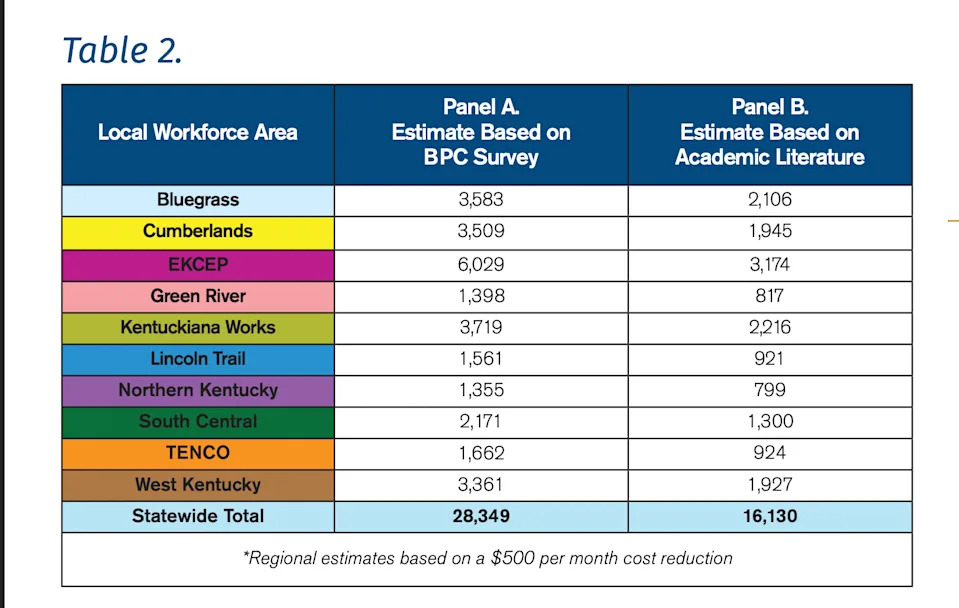
Eyes to Frankfort
During the 2026 legislative session, the General Assembly will pass a new state budget. In order to have a successful child care landscape, the state needs both public dollars and private partnerships, Aull said.
“Without a doubt … this is going to require public investment,” he said, though he didn’t yet have an estimate of how much the legislature would need to include in the budget for it in 2026.
“Making sure that we have a really strong low-income subsidy system for those low- income working families, making sure that we have mechanisms to reduce cost for middle income families, making sure we have an appropriate regulatory landscape, making sure that there’s opportunities out there for child care providers to expand into sort of nontraditional areas (and) be able to expand into rural areas, making sure that communities are activated, making sure that employers are activated” will all be important, Aull said. “And of course, something that we think is extremely important in this conversation is good, high quality data, so that we know exactly where there’s a need for child care, where there’s a demand, where it’s lacking.”
This kind of big impact can’t happen quickly, Aull said.
“This is not something that’s going to get solved overnight. We’re not going to be able to pull in that many workers in one legislative session. But the sooner we can start laying the foundation for that, the sooner we can get to that point where we can start bringing more of these parents into the workforce — if they want to join the workforce, and if they want to go and do the types of things we talk about in this report.”
The chamber will also be “pushing” lawmakers to “continue really important programs, such as free child care for child care workers,” Aull said.
At the same time, he said, “we need to start laying the foundations for actions in the future.”
SUBSCRIBE: GET THE MORNING HEADLINES DELIVERED TO YOUR INBOX





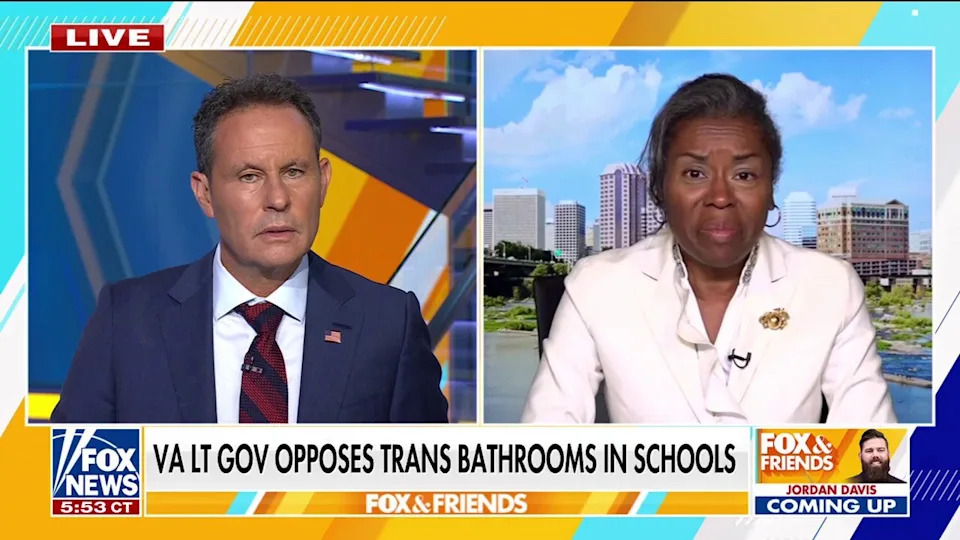
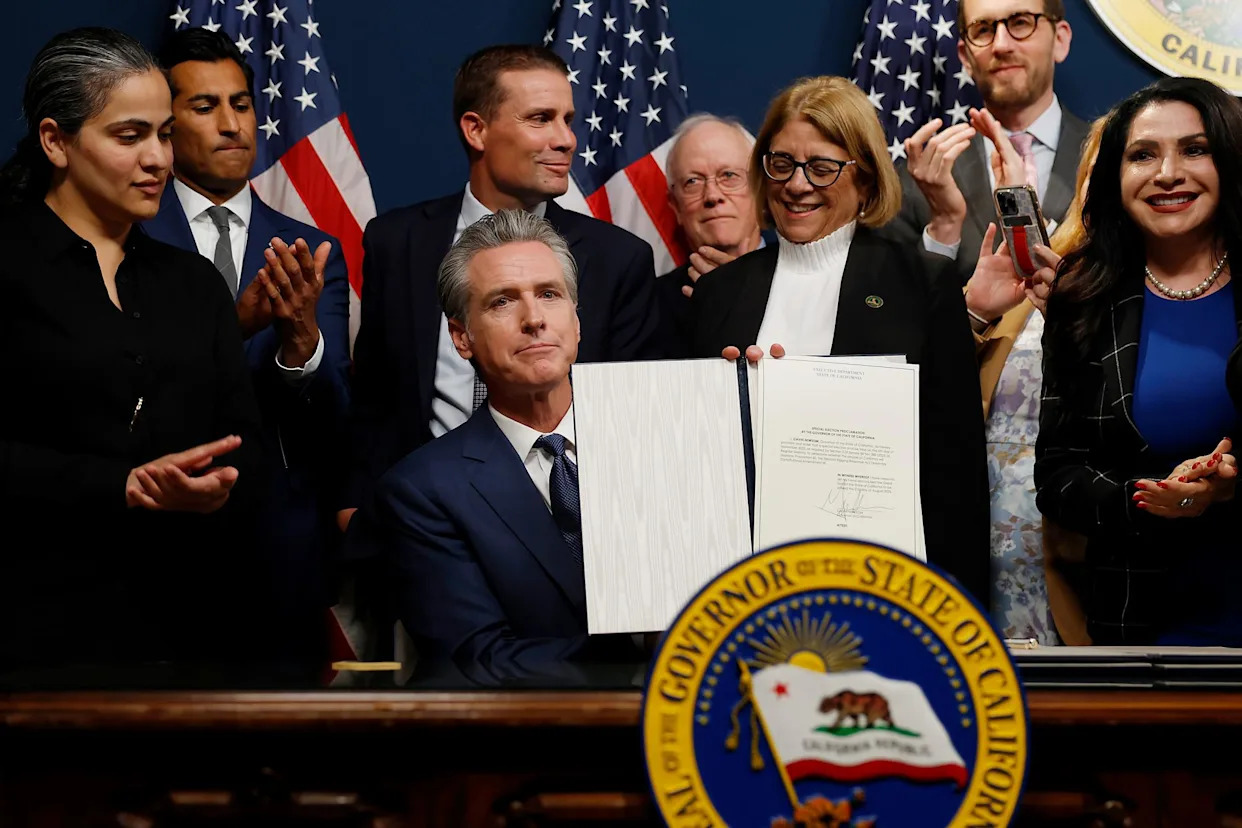

Comments